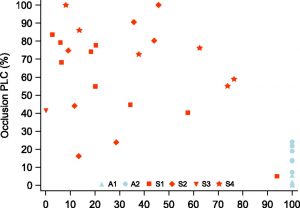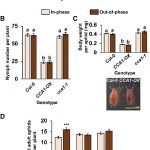Insights into Esca Grape Vine Disease
Esca is a fungal vascular disease of grapevine (Vitis vinifera) that negatively impacts grape yield and the wine industry. Esca is  characterized by three main symptoms: leaf scorch, trunk necrosis, and a colored stripe along the vasculature. The fungi most strongly associated with esca wood necrosis in the trunk have been identified. While the disease was formerly associated with the presence of soft rot (caused by basidiomycetes such as Fomitiporia mediterranea), studies have identified two vascular pathogens, Phaeomoniella chlamydospore and Phaeoacremonium minimum, which are detected in trunk necrotic tissues of esca symptomatic vines. In regard to esca’s mechanism of action, one hypothesis suggests that the leaf scorch it causes stems from fungal pathogen-derived elicitors and toxins. A second hypothesis proposes that leaf scorch is caused by hydraulic failure due either to air embolism, the pathogen itself and/or plant-derived tyloses and gels. To test these hypotheses, Bortolami et al. (10.1104/pp.19.00591) transplanted naturally infected esca vines from the field into pots, allowing them to explore xylem integrity in leaves using synchrotron-based in vivo x-ray microcomputed tomography and light microscopy. Their results demonstrate that symptomatic leaves are not associated with air embolism. In contrast, symptomatic leaves presented significantly more nonfunctional vessels resulting from the presence of nongaseous embolisms (i.e. tyloses and gels) than control leaves, but there was no significant correlation with disease severity. Using quantitative PCR, the authors determined that the two vascular pathogen species associated with esca necrosis in the trunk were not found in leaves where occlusions were observed. Together, these results demonstrate that symptom development is associated with the disruption of vessel integrity and suggest that symptoms are elicited at a distance from the trunk where fungal infections occur.
characterized by three main symptoms: leaf scorch, trunk necrosis, and a colored stripe along the vasculature. The fungi most strongly associated with esca wood necrosis in the trunk have been identified. While the disease was formerly associated with the presence of soft rot (caused by basidiomycetes such as Fomitiporia mediterranea), studies have identified two vascular pathogens, Phaeomoniella chlamydospore and Phaeoacremonium minimum, which are detected in trunk necrotic tissues of esca symptomatic vines. In regard to esca’s mechanism of action, one hypothesis suggests that the leaf scorch it causes stems from fungal pathogen-derived elicitors and toxins. A second hypothesis proposes that leaf scorch is caused by hydraulic failure due either to air embolism, the pathogen itself and/or plant-derived tyloses and gels. To test these hypotheses, Bortolami et al. (10.1104/pp.19.00591) transplanted naturally infected esca vines from the field into pots, allowing them to explore xylem integrity in leaves using synchrotron-based in vivo x-ray microcomputed tomography and light microscopy. Their results demonstrate that symptomatic leaves are not associated with air embolism. In contrast, symptomatic leaves presented significantly more nonfunctional vessels resulting from the presence of nongaseous embolisms (i.e. tyloses and gels) than control leaves, but there was no significant correlation with disease severity. Using quantitative PCR, the authors determined that the two vascular pathogen species associated with esca necrosis in the trunk were not found in leaves where occlusions were observed. Together, these results demonstrate that symptom development is associated with the disruption of vessel integrity and suggest that symptoms are elicited at a distance from the trunk where fungal infections occur.



